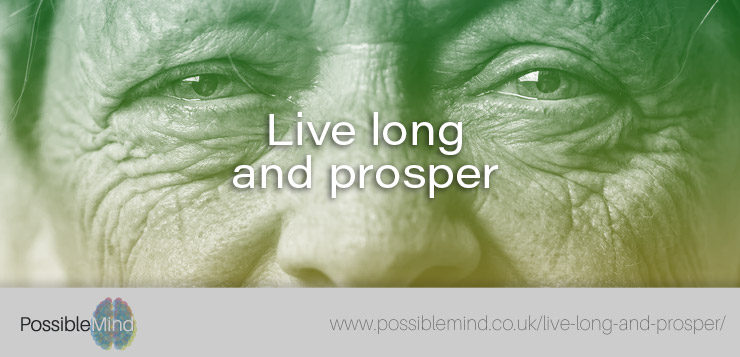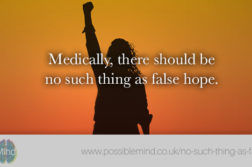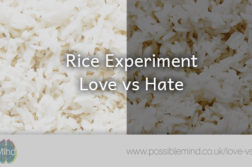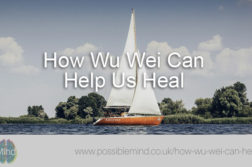When asked, “What do you want from your cancer treatment?”. The reply came, “Not to die.” However, something didn’t quite sit right with me about this reply. So how would I reply to the question? “I guess, I would say, I want to live.”
What’s the difference, I hear you say. We all know we are going to die somewhen, but being alive (not dying) and living are two very different things. I could be kept alive forever on a life support machine in a vegetive state, but is that living?
This made me think, most of us aim to live as long as we can. This then begged the question, what is a full and long life? 60 years old, 70, 80, 90 or even the holy grail and the letter from the Queen at 100 years old?
Then I read an article that changed my perspective.
Using the human genome, scientists at Australia’s national science agency discovered that Human’s DNA has a maximum natural lifespan of only 38 years. Meaning that this is how long we would most likely live without improved living conditions of good hygiene, shelter, diet, health care and other safety measures.
By exploring the genomes of other animals, they also concluded how long their DNA programmed them to live for:
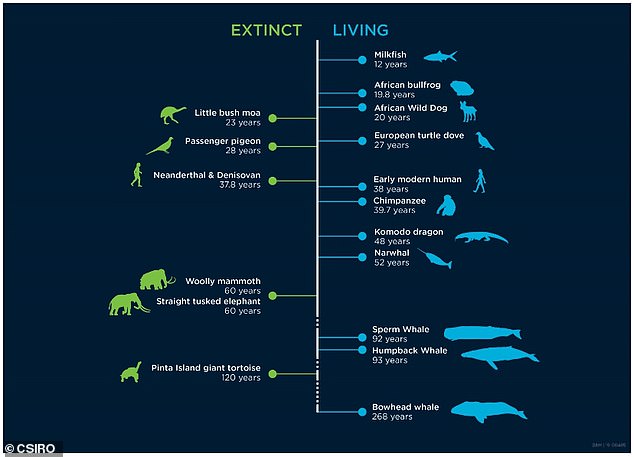
As you are aware, this website’s focus is on people and this information, helps me structure a way of looking at human health – Anything over 38 years old is a bonus of being born in a time of advanced health care and cleanliness. Which, in my opinion, is pure luck – If the same biological you was born 300 years ago you probably wouldn’t live to the age you will live to by being born in the 20th or 21st century.
The chart below shows that being born in the UK anytime before 1849 meant that you could not guarantee an average life expectancy over 38 years old:
From that time the upward curve of the average life expectancy continues to rise up to 81.2 years old in 2019. This is an astounding 43.2 years and more than double the amount of time that our natural DNA is designed to keep us alive.
Now, this is where everything gets interesting, most of the elements that help us live longer than 38 years are within our control on a day to day level- Hygiene – by keeping our local environment clean and safe, Diet – by choosing what we eat, Fitness – by choosing how much exercise we take and finally keeping ourselves mentally well by reducing stress and staying as positive as we can. According to a Proceedings of the National Academy of Sciences (PNAS) article, people who remain optimistic are nearly twice as likely to reach the age of 85 than those who have a pessimistic outlook on life.
An acquaintance of mine has a really poor diet, I am not sure I have ever seen him eat anything fresh. He only eats Pizza, Pasties, Fries and Takeaways. He looks much older than his actually age, most people who meet him guess him to be nearly 15 years older than he actually is. All because of the food he chooses to put in his body as fuel.
In the UK we are educated to have 5 pieces of fruit or veg each day. A recent Harvard University study extended upon this to suggest that the best mix of fruit and vegetables for a long life is two pieces of fruit and three pieces of veg. The amazing part of this instruction is that it is a choice and behaviour that we can all action to help with our health and increase the length of our life.
Is it never too late for anybody, including my acquaintance, to make those changes and turn their life around.
This is backed up by people who unexpectedly recover from life-threatening conditions. The commonality between those 3000+ people who healed themselves were these…
…8 characteristics of Spontaneous Remission
- A change from dependency to autonomy combined with activities, attitudes, and behaviours that promote increased autonomy, awareness of themselves, others, and their environment, love, joy, playfulness, satisfaction, laughter, and humour.
- Facing the crisis, the despair, the sadness, and the pain and discovering they have the power to find a new way of life that is fulfilling and meaningful.
- Taking control of their lives, (personal, professional, emotional, spiritual, and medical) and living each day fully combined with a willingness to evaluate their beliefs and attitudes and change old beliefs and attitudes that are no longer appropriate or adequate.
- Becoming comfortable with and expressing and accepting both their positive and negative emotions/feelings, their needs, wants, and desires (physical, emotional, spiritual); the ability to say “No” when it is necessary for their well being.
- Having at least one strong loving relationship — a strong connection to another person, an activity, an organization(s), changing the quality of their interpersonal relationships with spouses, friends, family, neighbours, doctors, nurses, etc. in a positive way, and motivation to help others.
- Working in partnership with their physicians and participating in decisions related to their health and well being.
- Finding meaning in the experience of cancer, finding reasons to live, accepting the diagnosis but not the prognosis, seeing the disease as a challenge, belief in a positive outcome, and having a renewed desire, will and commitment to life.
- Choosing activities and practices that promote increased awareness and reduce stress (imagery, stress reduction, yoga, etc.); showing renewed spiritual awareness (Soul) that often results in a spiritual practice (prayer, meditation, religious affiliation, connection to nature, etc.)
So let’s be honest with ourselves, other than accidents and freak illnesses, we can do a lot to help us to live to an older age.
The Blue Zones
But there is more we can do from a preventative perspective by learning from people who have achieved it by living to 100 or beyond:
Ogimi, an island located south of mainland Japan, Okinawa is one of five places around the world that author and National Geographic explorer Dan Buettner calls a “blue zone,” where he says people live the longest, happiest lives. Others include Sardinia, Italy; Nicoya, Costa Rica; Ikaria, Greece; and Loma Linda, California.[source]
The key point in the above statement is “longest” AND “happiest” lives because if living a long tortuous life was the key to living to 100, why would we bother? So what can we do to help ourselves live to an old age?
In 1975, Craig Willcox, professor of public health and gerontology at Okinawa International University carried out the Okinawa Centenarian Study, exploring why so many people in Ogimi lived to 100 and beyond. The study’s discoveries were 3 fold:
- Diet
- Social practices
- Genetics
Before we say oh! Genetics, Professor Wilcox stated
“About two-thirds of longevity is related to diet and way of life, the rest is genetics. Generally speaking, you need the genetic rocket booster if you want to get into the hundreds, not just a good diet,” Willcox says. “We haven’t looked into whether or not Okinawa has a genetic advantage over other parts of Japan, but longevity does run in families here.”
So, even though not conclusive, Genetic may well play a part in reaching 100, however, in a more recent study, we have also discovered that our genes are only designed to keep us alive for 38 years. Let’s also remember that we are not necessarily looking at reaching 100, we are exploring what we can do to live our longest and healthiest life or to give our selves the best opportunity to recover and heal.
According to the Okinawa Centenarian Study, we can control two-thirds of what makes a difference to our longevity i.e Diet and Social Practices. So let’s look at the diet and social practices of the people who live on Ogimi:
The diet on Ogimi has been described as:
In terms of preventing cancer and cardiovascular disease, the Okinawan diet gives more than five servings a day of fruits and vegetables and incorporates more heart-healthy fish than meat, says Willcox.
“There’s an Okinawan phrase, nuchi gusui, which can translate as ‘let food be your medicine,’” he notes. “The sweet potatoes, bitter melon, carotenoid-rich marine foods like seaweeds, green leafy vegetables, and fruit in the diet are anti-aging as they reduce inflammation and oxidative stress.”
“The traditional Okinawan diet is also nutritionally dense, yet calorie poor, and that’s ideal,” Willcox continues, adding that sweet potato rather than white rice was the staple in Okinawa up until the 1960s.
“If you calorie-restrict mammals in a lab, they live longer pretty much across the board,” he says. “A persistent energy deficit triggers a self-preservation mode—you adapt to convert a higher proportion of food into usable energy and turn on enzymes that promote longevity.”[source]
And their Social Practices:
Society is structured so older residents retain purpose, or ikigai, in their lives. Giving some in Ogimi an ikigai is the local craft of weaving basho-fu textiles, where the time-intensive cleaning of fibers and spooling of thread is done by groups of older women. It’s not just a way to remain socially active; it gives the weavers a way to supplement their income and contribute to the village economy. Naturally, the basho-fu center is run by a 98-year-old from a family full of centenarians.
Then there’s the way society stresses mutual support through moai. This Okinawan social mechanism brings groups of people with a shared interest together, allowing them to develop emotional connections. Buettner says that’s a crucial element to living a long life, noting that “loneliness is as bad for you as smoking.”[source]
From the lessons above, it seems to suggest the best chances of living well into old age comes from having a purpose, a sense of community and not being too stressed (like that caused by loneliness). So let’s look at these a little further.
Frankl and having a purpose
Having survived the concentration camps of the second world war, Viktor Frankl was fascinated as to why some could endure and survive such horrific conditions whilst others chose to take their own lives. Frankl’s conclusion was that it came down to having a purpose to live for.
As Philosopher Friedrich Nietzsche put it:
He who has a why to live can bear almost any how.
Those who were able to see the events as a moment in time were able to make plans for after the war was over, were according to Frankl, most likely to survive the conditions. Assuming they were not murdered or their bodies gave way to the horrors of camp life first.
Two quotes by Frankl help demonstrate the mindset we can develop to would help us live longer:
When we are no longer able to change a situation, we are challenged to change ourselves.
Everything can be taken from a man but one thing: the last of the human freedoms—to choose one’s attitude in any given set of circumstances, to choose one’s own way.
A really interesting example that highlights this is an event that took place in a New York Hospice. For the first time in the hospice’s history, not a single person died in a calendar month, that month was December. After the first week of January, when the numbers were high, all the figures went back to the expected rates.
The hypotheses of why there we no deaths – The year was 1999! The Hospice patients wanted to see the New Millenium. Now we know we can’t delay death forever, but it is fair to say that having the purpose of wanting to see the year 2000 could have lengthened some seriously ill peoples life by up to one month. All through having a different mindset.
Now imagine what could happen if we had a purpose-based mindset embedded from a younger age!
Loneliness and Stress
Along with discovering our purpose, imagine if we could have a mindset that enabled our immune system to work to its full potential, well we can if we can manage our response to stress.
To explore this further let’s look at our bodies’ hypothalamic pituitary adrenal (HPA) axis.
The HPA axis is the system that actions our stressful fight or flight response to protect the outside of our body. For example, if we are chased by a tiger we either need to fight it or run away (flight).
Whereas, our immune system’s purpose is to protect the inside of our body.
Through evolution, our body decided that the outside HPA axis system trumps the immune system. It presupposes that there is no point in the immune system trying to protect the inside of the body if a tiger is about to kill us and destroy the outside.
It takes a lot of energy for us to run our immune system, for example, if recovering from the flu we are left lethargic and need to lie down, though, if a robber rushed into our house brandishing a knife. Our HPA axis would override our immune system to give us the energy to get away or protect ourselves. Once the threat has passed our immune system will reboot to continue its function of helping the inside of the body recover.
It is almost the perfect collaboration of systems. However, ‘almost’ does not quite make it perfect because the Achilles heel of this union is stress.
The modern world, like the ancient world, has lots of pressures, the difference though is that these worries last much longer than the stress of being chased by a tiger. Meaning that in the modern world our HPA Axis is activated more often than it needs to be. For example, the stress of being made redundant has longer implications which include the lack of money, possibly losing the house and maybe even divorce.
Our external stresses of the modern world extend and go on for weeks, months or even years, unlike being attacked by a tiger which would be stressful for a few minutes at most.
This led Dr Bruce Lipton, in his book ‘Biology of Belief’ to share that “Every illness’s cause has been linked to stress”. All because the HPA Axis is trying to protect the outside of the body, and inhibiting our immune system from working to its full potential.
To give us the best chance of reaching old age, we must, like the people living in the Blue Zones, develop a lifestyle with reduced stress by living within our means and with a sense of community. This does not mean we should have no stress in our lives. For an optimum immune system, Author, Marie Mongan, suggests stress should be kept to no more than 2-5% of our life. Meaning that on average, having less than 1 hour and 12 minutes of stress each day would be ideal for our immune system to fight attacks and keep us alive longer.
Conclusion
Although we may have to accept that we pass our physical peak at around 38 years (which coincidentally is the age most athletes retire.) that does not mean we cannot live a long and happy life.
This is because the vast majority of our living years comes down to our:
- Mindset – like in the hospice resident in 1999, the 8 characteristics of Spontaneous Remission, having a purpose and reduced stress levels as described by the HPA axis.
- Diet – like the Okinawans eat and the study by Harvard University proved regarding 5 pieces of fruit and veg.
- Surroundings – Having clean and hygienic environments with good health care systems.
I hope you feel empowered to now realise that you have so much control over living to a ripe old age and giving yourself the best possible chance to recover from any condition. With this knowledge and understanding, and knowing that you will one day die, I wish you the longest and healthiest life possible.
If you like this post you will also enjoy:
- Want to live to 100? Copy the Japanese.
- How Wu Wei Can Help Us Heal.
- The Paradox of Intention
The Paradox of Intention. - The Grace Of Not Knowing.
- Like War, Illness and Pain are Not Bad.
- The Healing Power of Illness Book Overview.
Further Reading:


